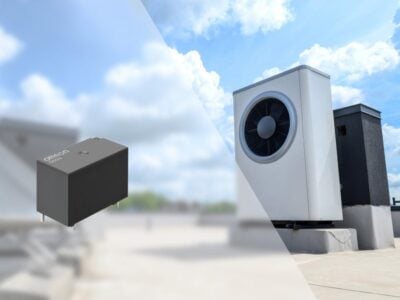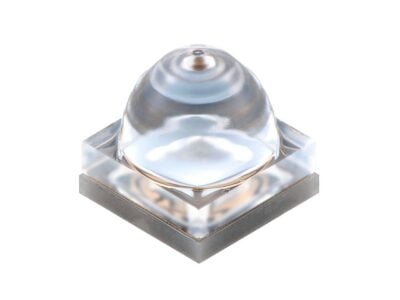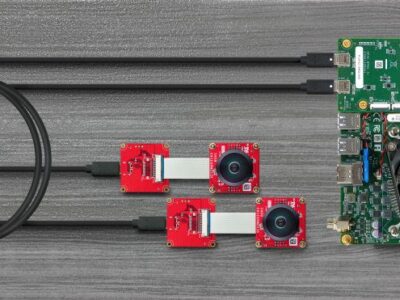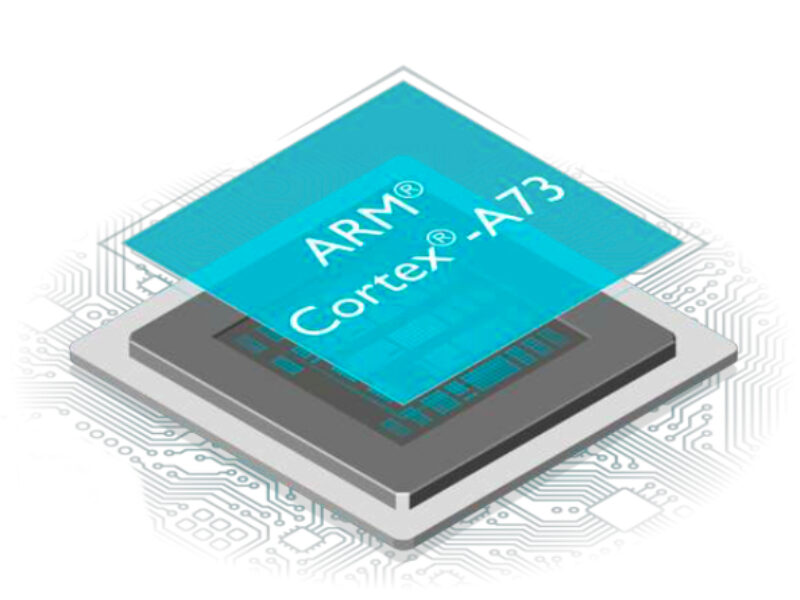
The 0.65 square millimeter Cortex-A73 is a new ARMv8 microarchitecture that runs at up to 2.8 GHz and is designed as a big core in a big.LITTLE configuration. The core was used in ARM’s recently announced 10nm FinFET test chip. ARM wouldn’t confirm whether the test chip also used its new Mali–G71 graphics core.
The Cortex-A73 is foremost a premium SoC for mobile devices that require compute for ultra-high definition displays, augmented and virtual reality, 5G communications and greater than 20 megapixel cameras. It was also designed for use in set-top boxes and multi-function printers. These mobile devices and their mid-range counterparts are thinner and prone to thermal saturation that impedes performance.
“Smaller form factors demand increasingly efficient CPUs,” said Ian Smythe, ARM’s director of marketing programs. “[With the A-73] we can maintain more peak performance in the same power budget.”
The Cortex-A73 is 20% more power efficient than the A72, allowing for additional thermal headroom for the rest of the SoC. The A73 can be paired with A53 chips to boost power efficiency by up to 90%.

Cortex-A73 performance in an octacore configuration. Source: ARM
“I think it signals that we’re finally seeing dedication to certain markets by the cores, rather one size fits all,” Jim McGregor, principal analyst at Tirias Research, told EE Times.
Using a variety of benchmarks, A73 outperforms its predecessor in typical mobile use cases, SIMD performance and memory throughput. However, the new CPU core does not show as big of a generation-over-generation performance improvement as previous offerings.
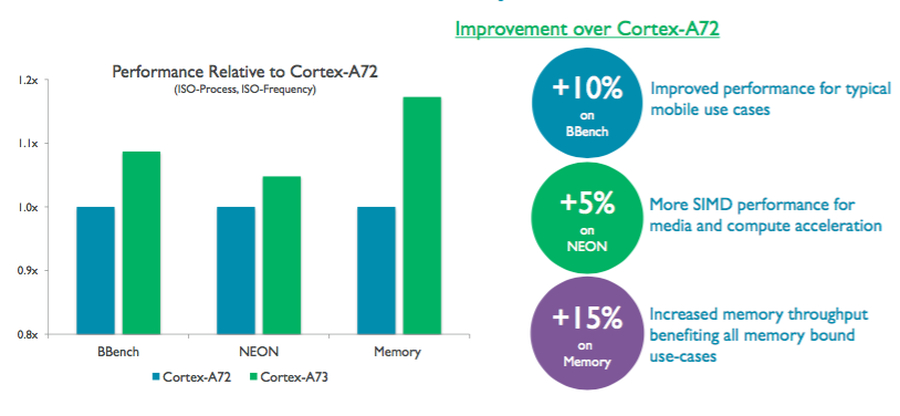
Performance improvement of Cortex-A73 compared to Cortex-A72. Source: ARM
“We’ll take what the process technology gives us and we have to make sure we can do more with it. I don’t think you’ll see a linear trajectory every time,” said Nadan Nayampally, vice president of marketing and strategy for compute products at ARM. “This doesn’t mean we might not get more performance next time.”
The A73’s power achievements are largely due to tweaks in its microarchitecture, including optimizations for branch prediction, pre-fetching and memory throughput. For example, ARM upgraded the size of the data cache to 64K while sustaining parallel streams for better multi-core performance.
The A73 suggests ARM is now developing cores for specific markets rather than creating one-size-fits-all IP. Now the company must focus on efficiency for other products, particularly as ARM targets applications in the medical and industrial segment.

Block diagram of Cortex-A73 microarchitecture. Source: ARM
”The A53 is a huge success, so as they go forward, they need to continue to make that more efficient,” Tirias Research Principal Analyst Jim McGregor told EE Times. “It’s great to increase performance but if you have to do it at the cost of efficiently and battery – no way.”
While Nayampally agreed that we will see “products designed for [specific] markets” – presumably from ARM – he noted that Cortex-A72 is doing extremely well with forthcoming products in a variety of markets.
“It’s still our primary product for enterprise and cloud infrastructure,” he said, adding, “A72 could go to 16nm or 10nm or backward into old technologies.”
McGregor expects to see a race between Qualcomm and Mediatek to take Cortex-A73 to market. Everyone wants that mid-range phone and it’s not fit for a custom architecture, he said.
ARM did not discuss servers during its deep dive tech event, but noted that the Cortex-A73 will not serve that market.
Related links and articles:
News articles:
ARM takes VR/AR mobile with GPU core
ARM’s Bifrost steps up graphics, bridges to machine learning
 If you enjoyed this article, you will like the following ones: don't miss them by subscribing to :
eeNews on Google News
If you enjoyed this article, you will like the following ones: don't miss them by subscribing to :
eeNews on Google News


